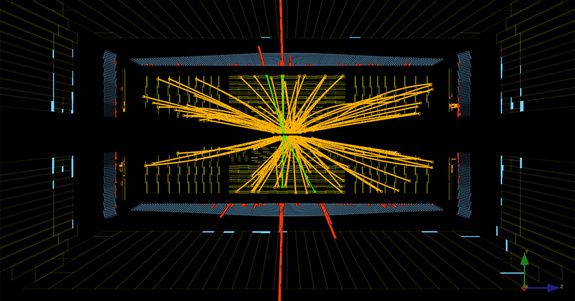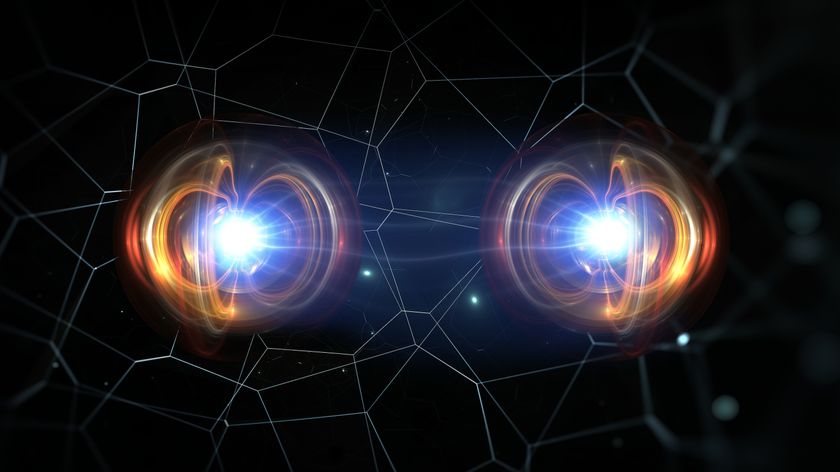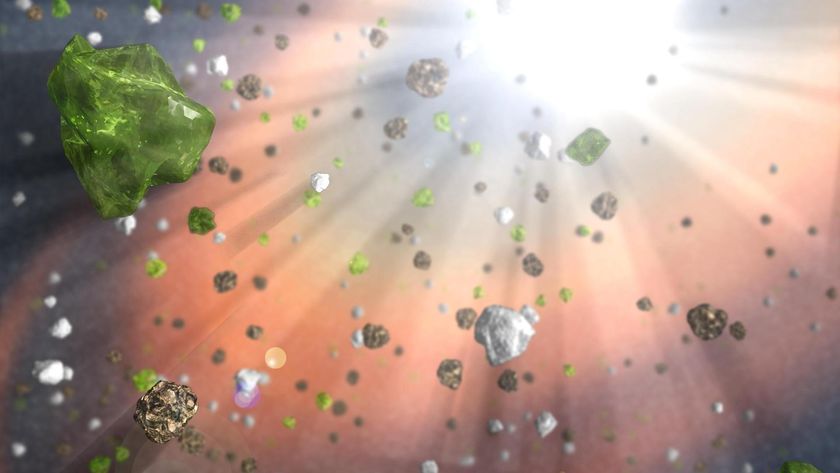Update on Possible Higgs Boson Discovery Coming Next Week

The latest news on a newfound particle that turned up last year at the world's largest particle accelerator will be announced at a conference beginning tomorrow in Italy.
The big question on scientists' mind is whether the particle truly is the long-sought Higgs boson, which has been predicted for decades, but never seen, until perhaps now.
The teams behind the ATLAS and CMS experiments at the Large Hadron Collider at the CERN physics lab in Geneva, Switzerland, where the new particle was found, will present their analyses of the full set of data collected in 2012. The gathering, called the Moriond conference, runs from March 2 through 16 in La Thuile, Italy.
The researchers announced their find in July 2012, and have been studying the particle's properties ever since in hopes of confirming it is, in fact, the Higgs. [Gallery: Search for the Higgs Boson]
"Patience is the order of the day,” said CERN’s research director, Sergio Bertolucci, in a statement. "Everyone wants to know exactly what it is we've discovered, and that will come through a long and painstaking analysis. But the Higgs is just one part of a wide research program at the LHC experiments, and there will be plenty of other interesting physics at Moriond."
The Higgs boson is the missing piece of the Standard Model, which describes all the known subatomic particles in the universe. Theorized by physicist Peter Higgs and his colleagues in 1964, the particle is thought to be tied to a Higgs field that bestows mass on other particles.
However, researchers caution that the final word on the Higgs is unlikely to be handed down in the coming week.
Sign up for the Live Science daily newsletter now
Get the world’s most fascinating discoveries delivered straight to your inbox.
"Many people were hoping CMS and ATLAS, the two large multi-purpose experiments operating at the LHC at CERN, would finally announce that the boson discovered last year is really a Higgs boson," LHC physicist Pauline Gagnon wrote on the physics blog Quantum Diaries. "Unfortunately, it is still too early to say. Nevertheless, both experiments can be expected to show interesting updates on the new boson mass measurement, decay rates and spin, all of which will provide a clearer picture."
To determine if the new particle is actually the Higgs, scientists must study how it decays. The particle is exotic and short-lived, and almost immediately after being conjured in the accelerator, it decays into other, more mundane particle species. By studying the rates and patterns of these decays, the physicists hope to show that the new particle fits the properties predicted for the Higgs.
The new data being presented at the conference include more precise measurements of these decays, which could be the key to confirming the particle's identity.
"Precise measurements may not at first sight seem as exciting as discovering a new particle," Bertolucci said, "but it’s there that we really learn things. For example a discrepancy with theoretical predictions for the signal strengths in any of the decay channels would be one of the strongest markers for new physics."
Gagnon said she looked forward to learning whether the new particle decays in patterns that deviate from what is predicted by the Standard Model. If so, it could point to other new particles joining the mix, such as those predicted by a theory called supersymmetry.
"Both ATLAS and CMS obtained sometimes more, sometimes less events containing the new boson than what is expected from the Standard Model, although these observations came with very large errors," Gagnon wrote. "An excess of events in the two-photon decay rate could indicate that new particles contribute to the process, a possibility that many theorists hope would reveal the presence of supersymmetry."
Follow Clara Moskowitz on Twitter @ClaraMoskowitz or LiveScience @livescience. We're also on Facebook & Google+.












